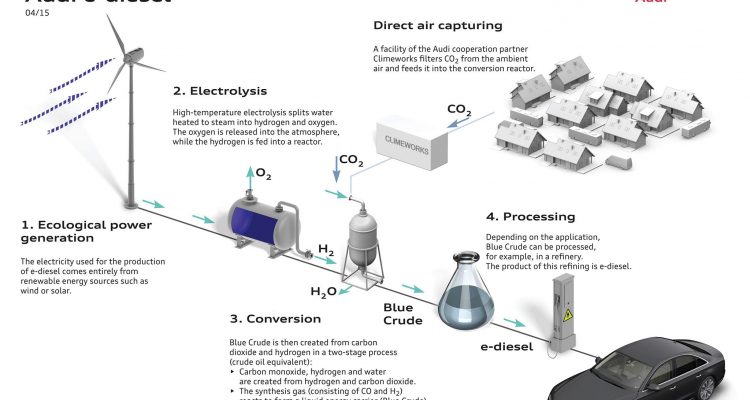Audi creates fuel from water and CO2 that leaves no carbon marks.
Audi engineers made the impossible possible by producing diesel fuel created from high temperature water and carbon dioxide.
Just four months into the process and the company Sunfire was able to produce the first amount of fuel which was named “blue crude”. The product is made of long-chain hydrocarbon elements, similar to fossil fuels, but does not contain sulfur or aromatics and burns without producing any soot.
It’s called the Fischer-Tropsch process, and has been around since the 1920s, but has never been done at such high temperatures. It’s the high temperatures that gave us the opportunity to produce fuel from water.
So what is it?
It begins with a renewable energy source (wind, solar or hydropower). The energy heats water in excess of 1472 degrees Fahrenheit. This superheated steam is then broken down into hydrogen and oxygen through electrolysis (passing an electric current through it). At the same time, carbon dioxide is broken down into carbon monoxide. The hydrogen from the water is mixed with carbon monoxide at high temperature and pressure and the result is “blue crude.” Sunfire suggests that not only is it more environmentally friendly than fossil fuel, but it has a 70% energy efficiency, meaning that 70% of the energy captured by the renewable source is stored in the synthetic crude.
fuel from water

